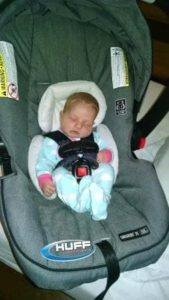5 Things to Keep In Mind When Picking Out A Car Seat For Your Child
Car Seat Safety
The Right Car Seat for Your Child
Nothing in this world will be more important to you than the safety of your child. Protecting your child while on the road is a top priority.
You are going to have a new baby and it is time to shop for the perfect car seat, so you walk into the local store to pick one up. Shouldn’t be that difficult right?

Well, you round the corner of the car seat aisle and come to a screeching halt. You quickly see that there are dozens of different brands and styles to choose from. So you take some time to look over all of the different options, take some notes, and head home to do some research online to see which one is best for you and your child
That is how you may have landed on my blog article. Although I am not making any specific brand recommendations for your child’s car seat, I at least hope that this information can help you when making your final decision.
Many soon-to-be parents in Maryland don’t know where to begin when it comes to car seats. And, each choice has advantages and disadvantages.
Here are five things to keep in mind, from shopping to installation, to help you find the right seat for your precious cargo:
- Know the pros and cons of each seat type. Children usually outgrow infant-only seats within the first year. However, they offer a snug fit and allow you to quickly snap the baby carrier in and out. Convertible seats and all-in-ones have a longer life, but they sometimes aren’t as convenient. Both transform into forward-facing seats, and an all-in-one seat becomes a booster, as well.
- Know when to use each type. The National Highway Traffic Safety Administration recommends using a rear-facing seat for as long as possible — through 12 months of age, at minimum. After kids reach the limits of rear-facing seats, often between ages 1-3, switch to forward-facing. When they outgrow those, usually between ages 4-7, it’s time for a booster. Finally, when a seat belt fits properly without a booster, your child is done with special seats! (They should still ride in back, though.)
- Don’t accept a used car seat unless you know everything about it. It should be within its service life (look for the expiration in the manual or on the seat) and not have been involved in an accident that caused injuries or forced air bags to deploy. And, of course, it should not be included in any recalls.
- Before you install, read the instructions. Seats should be secured in the back seat with anchors or a seat belt. When you’re done, get a free inspection to check your handiwork, if possible.
- Check the fit. Harness straps should be flat and placed through the slot either at or below your child’s shoulders (rear-facing) or at or above the shoulders (forward-facing). When the harness and chest clip are secured, make sure no extra material can be pinched at the shoulder
Knowing your child is secure in the back seat helps you focus on distraction-free driving in the front. Your car insurance also offers peace of mind when you’re on the road. If it’s been awhile since your last insurance check-up, give us a call today. We’ll help ensure you have the right coverage.
Be sure to contact your insurance agent once your child is born. Some companies offer a discount on your Auto Insurance for having a child.

Huff Insurance is a full service Independent Insurance Agent We have been dedicated to Protecting Lifestyles™ since 1960. We offer a full array of Personal Insurance, Commercial Insurance and Life Insurance products. Call us at 410-647-1111
